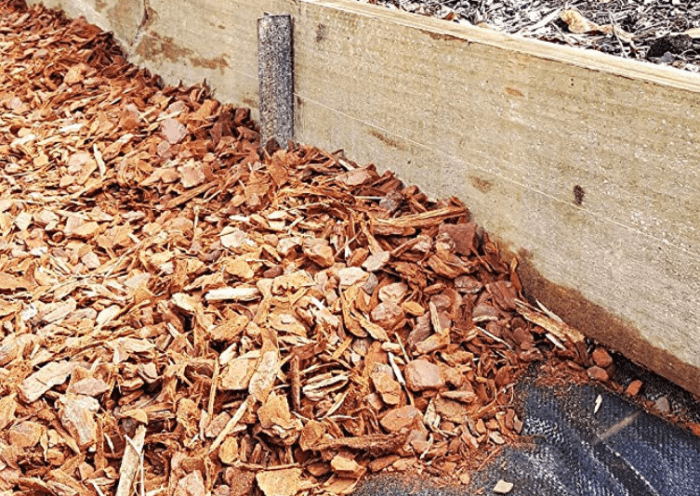How to Get Rid of Morning Glory Roots
I love to write about home and the outdoors and hope to help others with my knowledge.

Each summer, countless gardeners face morning glory vine infestations all over their property, whether they grew it themselves at one point or the roots meandered over from a neighbor's yard. After years of the plant aggressively taking over my property, I got rid of a serious morning glory infestation in three steps, without strong chemicals such as Roundup or glyphosate compounds, and without ruining the rest of my garden and lawn. This process can also be used for field bindweed.
There is also a simpler and faster process outlined below for killing morning glory in concentrated areas.

How to Kill Morning Glory
How My Morning Glory Infestation Started
A few years ago, I enthusiastically planted Grandpa Ott morning glory seeds on three sides of my home. Getting lush, full coverage on a property using plants tends to be expensive and time-consuming. As an inexperienced gardener, I was excited when I read I could get 15 ft. vines all over my trellises, very quickly, and for an investment of only a few dollars worth of seeds.
Within two months I had the gorgeous heart-shaped leaves and purple flowers completely covering three tall trellises, and then some. I relished providing healthy pollen and nectar to so many bees and hummingbirds, as if growing morning glory were solely an innocent and innocuous pastime.
The next growing season, which was the following year, morning glory seedlings were popping up all over my zinnia and alyssum flower beds. They even vigorously reared their ugly heads onto our lush green grass lawn. Weeding the morning glory seedlings became a tedious chore that made me cry. I was also unable to successfully sow other flower seeds in the same space.
Finally, local deer started munching the morning glory plants, leaving an uneven mess of vines, and golden tortoise beetles began eating holes into the leaves. Although all kinds of animals loved this plant, it became my biggest gardening nightmare.
After two years of this ever-growing problem, my husband and I got serious about taking control back from this beautiful but frustrating plant. This is how my husband and I safely eradicated a morning glory infestation from our property.

How to Kill Morning Glory in Concentrated Spots
For the least labor-intensive solution, you can use the Green Gobbler, which is a broad-leaf weed killer distilled from corn. I have used this weed killer in garden patches where I don't have any other plants I want to save. I spray the leaves, shoots, and stems on vines I cut so that the solution absorbs into the plant in multiple spots for maximum effectiveness.
The Green Gobbler is approved by the Organic Materials Review Institute as it is free of glyphosate, phosphates, sulfates, VOCs, petroleum solvents, chlorine, fluorine, and ethoxylates, and is approved for organic gardening.
This product is best used in areas where you are not concerned about killing other nearby plants. You will need to spray the Green Gobbler on any morning glory that pops up on your property throughout the growing season. This will help greatly reduce morning glory infestation issues in forthcoming years. This product is also ideal for use on dandelion patches or other broad-leaf weeds.
A gallon covers up to 1,000 sq ft, so it is long-lasting as well. It is best to cut the vines down as much as you can first so that the product covers the maximum amount of ground space needed.
If instead you have a full landscape you need to treat that is interspersed with other plant types you need to save, you can try my three-step solution below.
How to Kill Morning Glory Over a Full Landscape
Here is what you should do to remove morning glory from your garden.
1. Steam Morning Glory Seedlings & Plants
Whatever you do, do not pull morning glories up from the roots. This will make the tiny plant rhizomes underground create more "tentacles" and spread roots underground wildly, up to 20 ft. or more away. These guidelines can be similarly applied to field bindweed.
Although some gardeners choose to use flame torch methods to burn weeds, I found steaming them to be much safer and environmentally friendly. There are no fumes or fire hazards with steaming. I used the PurSteam household steamer rather than a garden steamer because the water tank size was much larger, and allowed me to steam the weeds for a long 45 minutes before having to refill the tank at the water tap.
The purpose of steaming the weeds is to kill them not only above the ground but to eradicate them through heat where they vigorously spread below ground through rhizomes. This was especially easy with PurSteam because the unit is height-adjustable with a long hose and allowed the nozzle to reach multiple angles and awkward, hard to reach areas of my garden, including below my deck.
Read More From Dengarden
Although there are garden steamers on the market, such as DynaSteam, it did not help me much because it only allowed for straight line steaming, though some people find this model suits their needs. You can also try the highly rated Bernzomatic 19425 Garden Torch if you prefer the weed burning method.
PurSteam is multi-functional, however, which has allowed me to use it for both indoor textile and outdoor plant steaming. Wear closed-toe shoes and gloves to protect your skin from the steam.
Process
The key to using PurSteam is to hold the nozzle against the leaves, press the button, and watch the morning glory wilt. You do not have to go through the work of steaming the higher vine growth as the roots will be dead. Wait until the next day to trim the plant at the root area to get rid of the brush. This will help ensure the underground rhizomes are dead and not spreading morning glories to other locations in your garden.
If you have local deer or goats around you can pile up the cut vines for them for a healthy snack.
You can use any one of these three steps alone, but they will be most effective when done together.
Poll
2. Sow Idealized Plants in Problem Areas
In Plant Beds:
Most gardeners still want greenery in the plant beds where they took morning glory down. If this is your wish, the best solution is to plant small to mature bushes and shrubs in the same area. This is because bushes and shrubs have deeper root systems that are already thriving. They do not have to compete with morning glory to grow or stay alive, as newly sown seeds or smaller plants would. My husband and I chose orange rocket barberry shrubs. Your local garden center will have an array of shrubs native to your area that will thrive in the soil on your property.
On Lawns:
- Pinch the heads off any existing morning glory plants so the sun is not able to provide much energy for photosynthesis and growth through the double-lobed leaf heads.
- You can then reseed or overseed any sparse areas of your lawn with grass seed in early spring or early fall when it is not too hot.
- Cover this grass seed with about a 1/4-inch of compost. The key is to have the grass seed germinate and fill the lawn before the morning glory-friendly warmer temperatures come along and invade more of the soil space.

3. Apply a High Quality Weed Barrier and Mulch to Plant Beds
- After steaming the weeds and planting any new bushes or mature plants, you will want to add a thick and breathable weed barrier atop the plant beds, molding the fabric around the plants you just placed in the ground. Although in the past I had tried laying plastic trash bags down to choke morning glory out, the bags did not hold up to the sunlight. They got brittle and littered with burnt-through holes, which brought the morning glory back. The ECOgardener fabric I used was thick and permeable, allowing the new bushes we planted to soak up needed rain as well as prevent morning glories from ever popping up in the beds. This barrier is also lightweight, so you do not have to worry about carrying a heavy roll around the yard with you.
- You will want to protect and cover the weed barrier with a layer of mulch as well. This helps the barrier to last longer as well as makes the landscape look appealing. Choose a mulch color that complements the color of your home. Choose brown if you have a lot of neutral colors on your property or red if you like bold colors. Pure cedar mulch is best if you prefer natural insect control. Although mulch colors tend to fade over time in the sun, their functionality does not diminish.
Since taking these three steps, my husband and I have eradicated our morning glory infestation without harmful chemicals, and we solved a problem we thought we would never be rid of!
Quick & Dirty Morning Glory Control
- Although morning glory makes for a beautiful plant, the mature vines create the biggest problem. You will want to take them down with a sheet below the plant to catch any falling seeds. A trellised morning glory usually has hundreds of seeds waiting to fall to the soil below and germinate the following spring.
- Pinch the heads off of any morning glories peeking out of the soil to prevent the sun from providing the majority of the energy that feeds into the plant.
- Do not pull morning glory weeds up from the roots. Although it sounds counter-intuitive, pulling the roots creates new, more numerous fibrous roots. These roots spread underground and help cultivate the plant in new locations, many feet away. This is why morning glory is considered an invasive species, perhaps second only to the kudzu plant.
This content is accurate and true to the best of the author's knowledge and is not meant to substitute for formal and individualized advice from a qualified professional.
Questions & Answers
Question: How long should I steam morning glory vines to get rid of them?
Answer: This is a good question. Steam the vines until you see them shrink/wilt as you steam them. Get as close to the root area as possible. You do not have to steam the upper vines for shrinking unless you are trying to create a smaller pile of plants to get rid of.
Question: In en effort to create an inexpensive privacy screen, we planted a Morning Glory on a trellis between 2 holly trees. The holly trees were growing too slowly to provide much privacy. Soon after the Morning Glory took off, our Holly started to brown. If I kill the morning glory now, can I save my Hollies?
Answer: If the morning glory is the problem then getting rid of them should help save the hollies. But you could have another cause as well. If you decide to use a chemical solution, cut the plant close to the ground and then paint the leaves with the solution. It's ideal to wear a mask of some kind so you aren't breathing in the smell.
© 2019 Stove And Home
How to Get Rid of Morning Glory Roots
Source: https://dengarden.com/gardening/How-to-Get-Rid-of-Morning-Glory-Safely-Permanently
0 Response to "How to Get Rid of Morning Glory Roots"
Post a Comment